The secrets of ancient Egypt, with its rich historical significance, continue to captivate the imagination of travelers worldwide. The land of pharaohs, pyramids, and ancient mysteries holds an allure that transcends time. In this article, we embark on a journey to uncover Egypt’s ancient secrets, delving into its intriguing past and shedding light on its enigmatic wonders. Ancient Egypt stands as one of the most remarkable civilizations in human history. Flourishing along the Nile River over 4,000 years ago left an indelible mark on the world through its advancements in architecture, art, religion, and governance. Every aspect of ancient Egypt tells a tale of greatness and charisma, from the mighty pharaohs to awe-inspiring monuments.
There’s something undeniably captivating about walking in the footsteps of ancient pharaohs and immersing oneself in the remnants of a bygone era. Travelers are drawn to Egypt’s ancient secrets because they offer a glimpse into a world shrouded in mystery and grandeur. Exploring the land of the Nile allows one to witness the marvels of human ingenuity and unravel the hidden secrets of ancient Egypt that have perplexed historians for centuries. In our quest to unlock the hidden secrets of ancient Egypt, we will explore various facets of this ancient civilization. From the awe-inspiring pyramids to the intriguing rituals and mysterious legends, we will delve deep into the hidden recesses of this remarkable land, shedding light on its mysteries and unraveling the enigmas that continue to bewilder historians and archaeologists.
Uncovering the Hidden Secrets of Ancient Egypt
1. The Secrets of the Pyramids

The Construction Mysteries of the Great Pyramids
The Great Pyramids of Giza stand as a testament to the extraordinary engineering skills of the ancient Egyptians. We will delve into the remarkable construction techniques employed in building these magnificent structures, examining the precision and ingenuity that allowed these monumental tombs to withstand the test of time.
Theories and Controversies Surrounding Pyramid Building
Throughout history, numerous theories and controversies have arisen regarding the construction of the pyramids. We will examine these theories, ranging from advanced ancient technologies to extraterrestrial influences, and discuss their validity in light of modern archaeological knowledge.
The symbolism of the Pyramid Structures
Beyond their monumental presence, the pyramids hold deep symbolism within ancient Egyptian culture. We will explore these majestic structures’ spiritual and cultural significance, understanding their role in pharaonic rituals, religious beliefs, and the afterlife.
2. Secrets of the Pharaohs
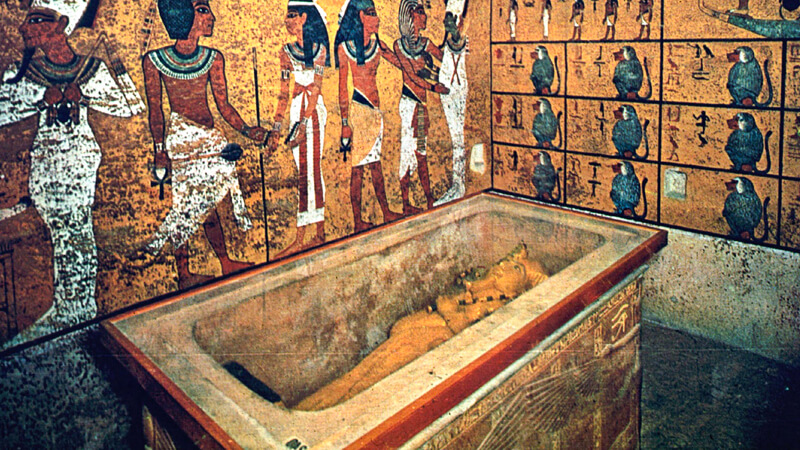
-
The Powerful Ancient Egyptian Rulers
The ancient Egyptian pharaohs were renowned for their authority and status. They held absolute power and were considered divine beings by their subjects. Pharaohs commanded vast armies, governed the kingdom, and were responsible for maintaining Ma’at (cosmic order). They were believed to be the bridge between the mortal realm and the gods, and their rule was seen as crucial for the prosperity of Egypt.
-
Tutankhamun’s Tomb and the Treasures Within
Tutankhamun, also known as the “Boy King,” ascended to the throne young and ruled during the 14th century BCE. His tomb, discovered by Howard Carter in 1922, remains one of history’s most significant archaeological finds. A stunning array of treasures and artifacts were uncovered within the tomb’s chambers, including the iconic gold mask that adorned Tutankhamun’s mummy. The tomb provided valuable insights into the ancient Egyptians’ funerary practices and material wealth.
-
Pharaohs’ Rituals and Religious Beliefs
Religion was central to ancient Egyptian society, and the pharaohs held key religious responsibilities. They were seen as intermediaries between the gods and the people, tasked with maintaining divine favor and cosmic balance. Pharaohs performed various rituals and ceremonies, including offerings to the gods, temple construction, and festival participation. They were also responsible for ensuring the construction of grand mortuary complexes, such as the pyramids, to secure their passage into the afterlife.
-
The Enigma of Cleopatra’s Reign
Cleopatra VII, the last pharaoh of Egypt, reigned during a tumultuous period when Egypt was under Roman influence. Cleopatra’s rule was marked by political intrigue, alliances, and her relationships with influential Roman leaders, including Julius Caesar and Mark Antony. Her reign continues to captivate historians and scholars due to the enigmatic nature of her character and the influence she wielded. Cleopatra’s story is intertwined with romance, power struggles, and the eventual demise of the Ptolemaic dynasty, making her one of the most iconic figures of ancient history.
3. Ancient Egyptian Mysteries and Rituals
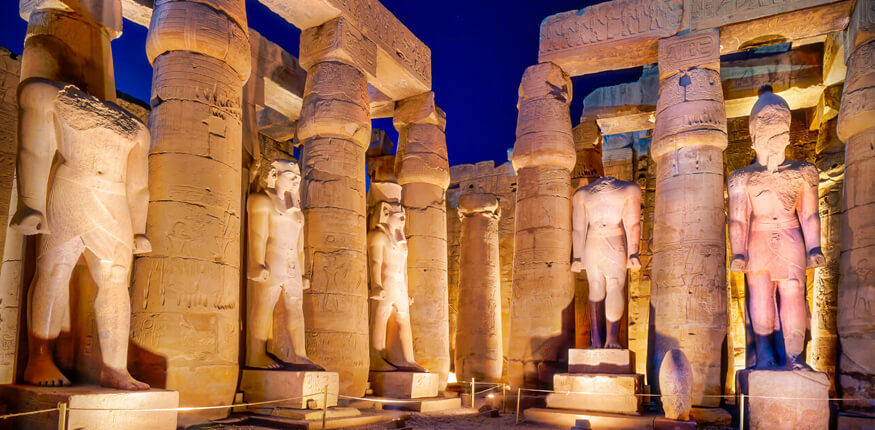
-
Unveiling the Rituals and Ceremonies of Ancient Egypt
Ancient Egyptian civilization was rich in rituals and ceremonies that played a vital role in their society’s religious, social, and political aspects. These rituals encompassed various activities, such as offerings to deities, processions, temple rituals, and festivals. The ancient Egyptians believed correctly performing these rituals was crucial for maintaining harmony between the mortal and divine realms.
-
The Role of Priests and Priestesses in Ancient Egyptian Society
Priests and priestesses held esteemed positions in ancient Egyptian society and were responsible for temple rituals and ceremonies. They acted as intermediaries between the people and the gods, serving as the spiritual guides of their communities. Priests and priestesses were well-versed in religious texts, performed purification rites, and oversaw temple operations. Their roles varied; some served specific deities, while others held higher positions in the spiritual hierarchy.
-
Understanding Mummification and the Afterlife Beliefs
One of the most fascinating aspects of ancient Egyptian culture is their intricate mummification process. Egyptians believed in an afterlife and believed that preserving the body was essential for the soul’s journey into eternity. Mummification involved elaborate rituals, including removing organs, preserving the body with natron, and wrapping it in linen bandages. The Book of the Dead, a collection of spells and prayers, accompanied the deceased to guide them through the afterlife.
-
Sacred Sites and Mysterious Rituals
Ancient Egypt was home to numerous sacred sites with great religious and spiritual significance. These sites included temples, such as the Karnak Temple Complex and the Temple of Luxor, where rituals and ceremonies occurred. The exact details of these rituals remain mysterious, as many aspects were kept secret and known only to the initiated priests. The sacred sites were also associated with celestial events and astronomical alignments, adding another layer of mystique to their rituals.
4. Hidden Mysteries of Egypt
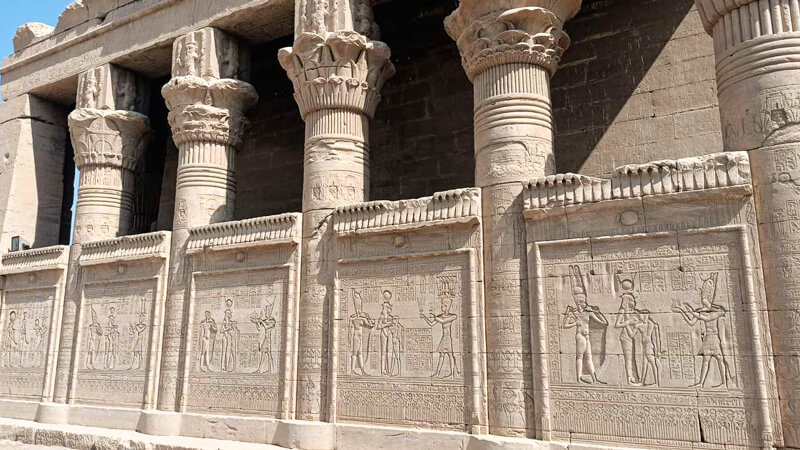
-
Exploring Lesser-Known Archaeological Sites and Discoveries
While iconic sites like the Pyramids of Giza and the Valley of the Kings draw much attention, Egypt boasts many lesser-known archaeological sites and discoveries. These hidden gems provide valuable insights into ancient Egyptians’ daily lives, beliefs, and practices. Places like The Temple of Abydos, Dendera Temple Complex, and Saqqara offer remarkable attractions, tombs, and artifacts that shed light on different periods of Egyptian history, often revealing intriguing details that are less widely known.
-
Unsolved Mysteries and Legends of Ancient Egypt
Ancient Egypt is steeped in mysteries and legends that puzzle researchers and historians. Examples include the construction techniques of the pyramids, the purpose of the Great Sphinx and its missing nose, the possible existence of hidden chambers within the pyramids, and the origin of the enigmatic Omm Sety, an Egyptologist who claimed to be the reincarnation of an ancient Egyptian priestess. These mysteries and legends spark debates and fuel ongoing research, keeping the allure of ancient Egypt alive.
5. Egypt’s Hidden Treasures

-
Lesser-Known Ancient Egyptian Artifacts and Their Significance
While iconic artifacts like the Rosetta Stone and the golden mask of Tutankhamun are widely known, Egypt is home to countless lesser-known treasures with great historical and cultural significance. These artifacts include intricate jewelry, beautifully crafted statues, delicate papyrus scrolls, and intricately decorated coffins. Each object provides valuable insights into ancient Egyptian art, craftsmanship, religious beliefs, and daily life.
-
Treasures Found in Tombs, Temples, and Museums
Egypt’s tombs, temples, and museums are repositories of hidden treasures discovered over centuries of archaeological exploration. Tombs, such as those in the Valley of the Kings and the Valley of the Queens, have yielded stunning artifacts like funerary masks, canopic jars, and intricate wall paintings. Temples, such as the Temple of Karnak and the Temple of Abu Simbel, house magnificent statues, reliefs, and inscriptions depicting ancient Egyptian civilization’s grandeur. Museums in Egypt and worldwide showcase many treasures, allowing visitors to appreciate the richness and diversity of Egyptian heritage.
Tips for Exploring the Secrets of Ancient Egypt
Planning a Trip to Egypt
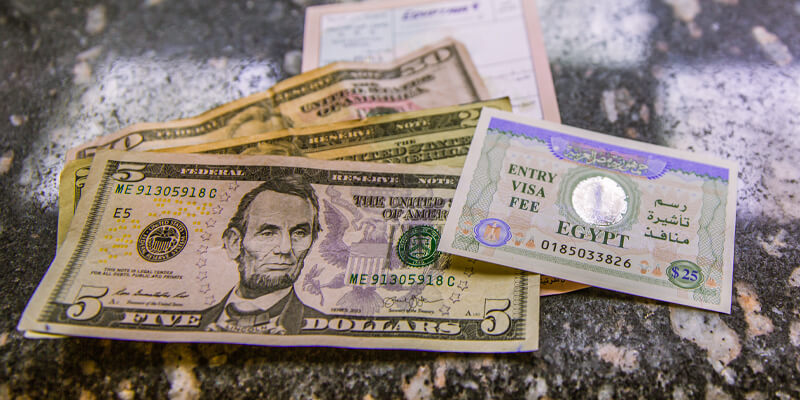
-
Best Time to Visit Ancient Egyptian Sites
The climate in Egypt can vary significantly throughout the year, so choosing the right time to visit ancient Egyptian sites is crucial. The best time to visit Egypt is during the cooler months, from November to February when temperatures are milder and more comfortable for exploring. Avoid the scorching heat of summer, especially from June to August, as it can be challenging to enjoy outdoor sites during the peak of the summer in Egypt.
-
Essential Travel Documents and Visa Requirements
Before traveling to Egypt, ensure you have the necessary documents and the visa requirements. Most travelers will need a valid passport with at least six months of validity. Depending on your nationality, you may require a visa to enter Egypt. Check with your country’s Egyptian embassy or consulate for the most up-to-date information on visa requirements and obtain your visa in advance if needed.
-
Choosing the Right Tour or Travel Agency
Choosing a suitable tour or travel agency can significantly enhance your experience when exploring ancient Egypt. Gem Egypt Tours is a reputable agency specializing in Egypt tours with a good customer satisfaction track record. You can book one of our vacation packages to Egypt with our hot deals and enjoy your trip to Egypt with our special offers!
We invite you to embark on your journey to Egypt, to stand in awe before the pyramids, to explore the hidden chambers of tombs, and to witness the beauty of ancient temples. Immerse yourself in the magic of ancient Egypt, and let its secrets envelop you in a profound and unforgettable experience.
Must-Visit Ancient Egyptian Sites
1. The Great Sphinx and the Giza Plateau
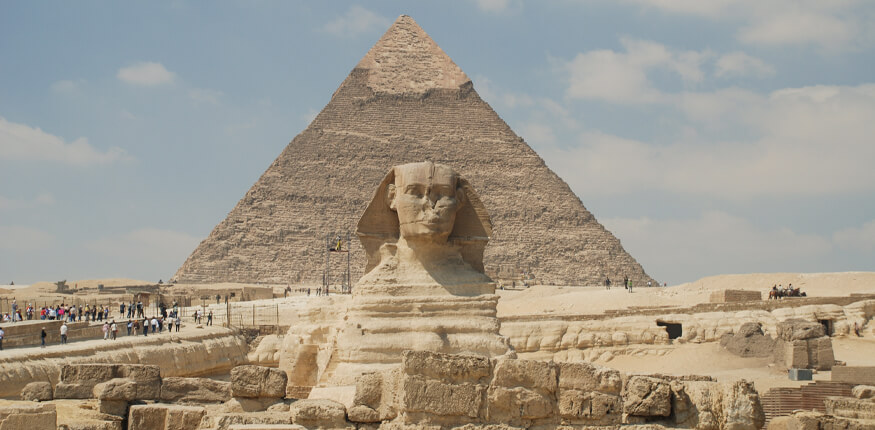
The Great Sphinx, an iconic symbol of ancient Egypt, stands proudly at the Giza Plateau near Cairo. This magnificent statue, with a human’s head and a lion’s body, is believed to represent the pharaoh Khafre. Visiting the Giza Plateau allows you to marvel at the Great Sphinx and explore the nearby pyramids, including the Great Pyramid of Giza, the Pyramid of Khafre, and the Pyramid of Menkaure. The Giza Plateau offers an awe-inspiring glimpse into the architectural achievements of the ancient Egyptians.
2. Exploring the Valley of the Kings

Located on the west bank of the Nile near Luxor city, the Valley of the Kings is an archaeological treasure trove. This cemetery is home to the tombs of numerous pharaohs and nobles from the New Kingdom period, including the famous tomb of Tutankhamun. Exploring the Valley of the Kings allows you to witness the intricately decorated burial chambers, colorful wall paintings, and hieroglyphic inscriptions that depict ancient Egyptian beliefs about the afterlife.
3. Luxor and the Temples of Karnak

Luxor, often called the “world’s greatest open-air museum,” is filled with ancient wonders. The Temples of Karnak, dedicated to the worship of the god Amun, stand as a testament to the grandeur and scale of ancient Egyptian architecture. Exploring the vast temple complex allows you to admire the towering columns, intricate reliefs, and the iconic Hypostyle Hall. Luxor also boasts the Luxor Temple, a magnificent structure for religious ceremonies and processions.
4. The Majestic Abu Simbel Temples

Situated in southern Egypt, near Aswan city, the Abu Simbel temples are awe-inspiring structures carved into the mountainside. Pharaoh Ramesses II built these temples to showcase his power and intimidate potential invaders. The enormous temple is dedicated to Ramesses II himself, while the smaller temple is dedicated to his wife, Queen Nefertari. The Abu Simbel temples are architecturally impressive and famous for the sun illuminating the inner sanctum twice a year during the Sun Festival.
Cultural Etiquette and Customs

-
Respecting Local Customs and Traditions
When visiting Egypt, it’s essential to respect the local customs and traditions of the country. Egyptians are generally friendly and hospitable, and it’s customary to greet people with a warm “As-salaam alaykum” (peace be upon you) and respond with “Wa alaykum as-salam” (and ease be upon you). Respect local traditions, such as modesty in dress and conservative behavior, particularly in more rural or traditional areas.
-
Appropriate Clothing and Behavior in Religious Sites
Egypt is home to numerous religious sites, such as mosques and Coptic Christian churches, which are significant for the local population. When visiting these places, dress modestly and appropriately, covering your shoulders, chest, and legs. Women may be required to cover their hair with a scarf in mosques. Maintain a respectful demeanor, refrain from loud conversations or disruptive behavior, and follow any instructions or guidelines provided by the religious authorities.
-
Tips for Interacting with Locals and Tour Guides
Interacting with locals and tour guides can significantly enhance your experience in Egypt. Egyptians are known for their hospitality and welcoming nature. Engage in polite conversation, ask questions, and show genuine interest in their culture and history. It’s customary to address people with their title (such as “Mr.” or “Mrs.”) followed by their surname unless they indicate otherwise. Be aware of the local norms regarding personal space and avoid invasive questions or discussions on sensitive topics.
Practical Tips for Exploring Ancient Egyptian Tombs
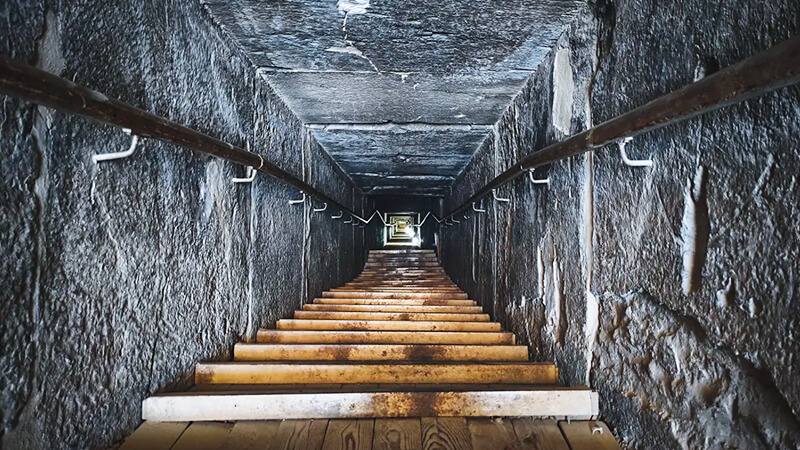
-
Understanding Tomb Hieroglyphs and Paintings
When exploring ancient Egyptian tombs, it’s beneficial to have a basic understanding of hieroglyphs and the symbolic meanings behind the paintings. Hieroglyphs were the old Egyptian writing system, and they often conveyed religious beliefs, historical events, and the journey of the deceased in the afterlife. Educate yourself on shared symbols and motifs to appreciate the stories and messages depicted on the walls of the tombs.
-
Navigating the Narrow Passages and Chambers
Many ancient Egyptian tombs feature narrow passages and chambers, and it’s essential to exercise caution while exploring these confined spaces. Wear comfortable and sturdy footwear to navigate uneven surfaces. Be mindful of low ceilings and watch your step to avoid tripping or accidentally damaging the ancient surfaces. Follow the guidance of guides or signage to ensure a safe and respectful exploration of the tombs.
-
Photography Guidelines and Preserving Historical Sites
Photography is often permitted in ancient Egyptian tombs, but it’s essential to follow the guidelines set by the authorities. Flash photography is typically prohibited as it can cause damage to delicate and ancient pigments. Respect any restrictions regarding using tripods or selfie sticks to avoid accidental collisions or injury. Remember to be mindful and considerate of other visitors and the site’s historical significance. Preserving historical sites is of utmost importance. Refrain from touching or leaning on the walls, as the oils on our skin can contribute to deterioration over time. Avoid graffiti or leaving any markings. The tombs have survived for thousands of years, and we must ensure they are preserved for future generations.
Throughout this extensive exploration of ancient Egypt’s secrets, we have scratched the surface of a civilization shrouded in mystery. From the pyramids to the pharaohs, from the rituals to the hidden treasures, we have unraveled the secrets that have fascinated travelers for centuries. Egypt’s ancient secrets have endured millennia, enchanting travelers with their allure. As you delve into the mysteries of this remarkable civilization, remember that the true essence lies not only in uncovering the secrets but also in the wonder and appreciation of the everlasting legacy that ancient Egypt has left behind.


0 Comment